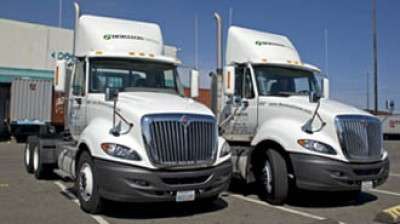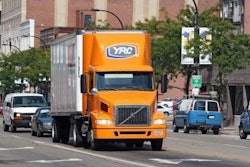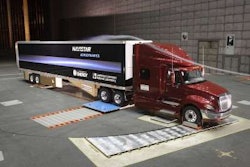
A study presented Thursday, Feb. 18, to Port of Tacoma commissioners shows that 90 percent of the heavy-duty trucks serving terminals meet the port’s 2010 clean truck standards, 4 percent more trucks than a year ago. The Washington State port’s Clean Truck Program’s 2010 standards, aimed at reducing port-related diesel particulate emissions, require trucks to have 1994 model year engines or newer.
Clean air goals were adopted in early 2008 as part of the Northwest Ports Clean Air Strategy, a partnership among the Port of Tacoma, Port of Seattle and Port Metro Vancouver, B.C. The strategy outlines jointly established short- and long-term clean air goals for ships, cargo-handling equipment, rail, trucks and harbor craft. In 2009, the Port of Tacoma launched its Clean Truck Program, adopting the regional strategy’s goals as standards.
The port’s recent truck study captured about 3,100 short-haul drayage trucks that regularly serve terminals on the Tacoma Tideflats. Study results also show:
• 90 percent of the trucks are model year 1994 or newer, meeting the port’s 2010 clean truck standards, 4 percent more than last year;
• About 6 percent meet the 2015 standard of model year 2007 or newer, 2 percent more than last year;
• Newer trucks are replacing older trucks; and
• Newer, cleaner trucks visit terminals more often than older, dirtier trucks, reducing overall emissions even more.
The port’s Cean Truck Program uses a market-based approach to convert its drayage fleet to cleaner trucks. The port has identified several prequalified drayage trucking companies and owner-operators that meet its clean truck standards – with three already meeting the 2015 standards. This prequalified list highlights firms that comply with the program standards and are partners in the U.S. Environmental Protection Agency’s SmartWay program.










